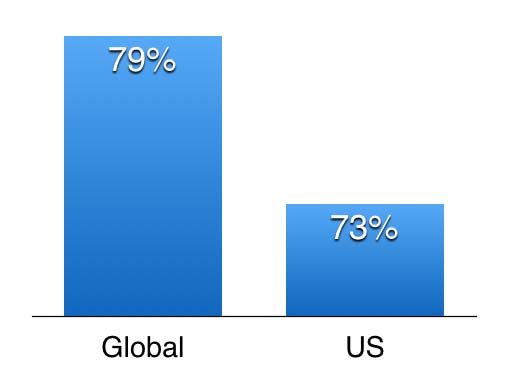Email continues to be the dominant marketing channel for both B2B and B2C businesses. Engagement in 2016 was up again, over 2015, with some industries seeing as much as a 26% growth in engagement rates. This, obviously is great news for business owners and marketers.
 However, for those of us who are using email marketing in the U.S., our ability to reach the inbox was only 73%, which is lower than the global comparison of 79%. Before we can get people to engage with our marketing messages, even as good as the email marketing channel is, we have to get our message into the inbox of the people that we are trying to talk with.
However, for those of us who are using email marketing in the U.S., our ability to reach the inbox was only 73%, which is lower than the global comparison of 79%. Before we can get people to engage with our marketing messages, even as good as the email marketing channel is, we have to get our message into the inbox of the people that we are trying to talk with.
With email marketing and marketing automation the measurements are changing. There was a time when two measurements were all we had to determine the effectiveness, open rates and click through rates. This was a while ago and since we’ve seen improvements in the technology so we get more data. We’ve also seen changes in the way that people are interacting with brands, online.
To get a real understanding of how your email, or marketing automation, campaigns are working, there’s a whole new group of metrics that you should be measuring. For this blog post, we’re going to take a look at the metric of deliverability and why this has to be the foundation for all of your email focus.
Because if your marketing message doesn’t end up at their “inbox” they’ll never read it!
Deliverability rate refers to the percentage of emails that are sent, that actually get delivered to the inbox of the recipient. Ever since the up-rising of spam, getting a marketing message all the way to the inbox keeps getting more difficult. The check stops that your emails have to make it through start at your recipient’s internet service provider (ISP). From there you message has to pass through any “junk mail” filters that your recipient has setup within their email application like Gmail or Outlook.
Today, we’re going to look at the ISP filters and what they are looking for so that you have a better chance of not having your marketing emails blocked before they every get to your recipients computer.
70% of all email sent, globally, is spam!
With this much junk mail floating out there it’s no wonder why your email has to fight so hard to get through. Even to the people that have signed up to receive your email messages.
At the first check-point, the ISP, is where your reputation as the email sender comes into play on the decision of whether or not to allow the email message to get to your recipient’s computer. The ISP is trying to determine if you are a spammer or not. They are, primarily, going to focus on two elements of your email message, the IP address that you sent the message from, and the domain name that you used to send the email message.
IP Address: There are basically two ways that IP addresses are set up. There are dedicated IP addresses or shared IP addresses. The basic differences between these setups are the dedicated IP address will be used just for one email sender while a shared IP address is used by multiple people or companies.
The challenge with a shared IP address is that if one of the people or companies that are sharing the address is identified as a spammer, everyone that uses that IP address will share that spamming reputation, even though they may never send a spamming message.
Domain Name: This is a big metric that filters look at to determine your reputation. Again, they are trying to decide if you’re a spammer or not so they can then decide whether or not to let your message go through to the person that you are sending the message to.
Some of the things that they are measuring your domain on are:
- The number of times a message from your domain has landed in someone’s spam folder
- The number of complaints that have been logged against your domain
- The number of times one of your messages has been moved from someone’s spam folder to their inbox
- The number of emails that you’ve sent that ended up inside of the person’s inbox
The ISP for every person that you are sending an email to is checking these points of measurement, and more, to determine the likelihood that you are a spammer. The results of all of these checks are then tabulated into your Sender Score. This is a score of your domain that ranges from 1-100 with 100 being the best score that you can have.
If you want to check your score, There is a tool at ReturnPath that you can use. Here’s the link. You can enter either your domain name of your IP address to find out how likely it is that you’re email’s are being blocked.
If you suspect that your domain and/or IP address are being blocked by some ISP’s you can check if you’ve been blacklisted. Visit MxToolbox. They have a tool that you can, again enter your IP address or domain name to find out if you’ve already been blacklisted. That link is right here.
